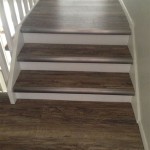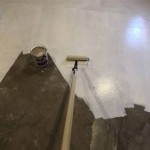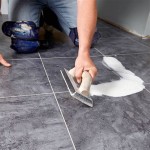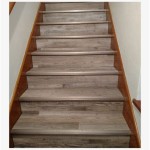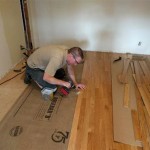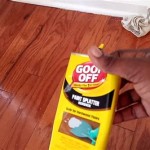How to Remove Super Glue From Wooden Floor Tiles in a Bathroom
Accidents happen. A common mishap in home improvement projects, or even everyday bathroom use, is the inadvertent spillage of super glue onto surfaces like wooden floor tiles. Super glue, known chemically as cyanoacrylate, is a powerful adhesive that bonds rapidly and creates a strong, durable hold. This strength, while beneficial for many applications, becomes a major challenge when attempting to remove it from delicate or finished surfaces like wooden floor tiles in a bathroom. The porous nature of wood, combined with the often-sensitive finish of bathroom tiles, necessitates a careful and methodical approach to avoid further damage.
The consequences of improper removal can range from cosmetic blemishes to permanent damage requiring tile replacement. Aggressive scraping can scratch the surface, harsh chemicals can discolor or degrade the finish, and excessive moisture can warp or weaken the wood. Therefore, understanding the properties of super glue and the characteristics of the affected surface is paramount to a successful removal process. Patience and a systematic approach are key to minimizing the risk of further harm. This article outlines several effective methods for removing super glue from wooden floor tiles in a bathroom, focusing on techniques that prioritize safety and preservation of the tile's integrity.
Understanding the Composition and Bonding Properties of Super Glue
Super glue's adhesive strength stems from its chemical composition and its rapid polymerization process. Cyanoacrylate monomers, the building blocks of super glue, react quickly with moisture present on surfaces, forming long, strong polymer chains. This polymerization creates a rigid, interlocking network that bonds the two surfaces together. The speed of this reaction and the strength of the resulting bond are what make super glue so effective, but also so difficult to remove.
The bond formed by super glue is relatively resistant to solvents, making it challenging to dissolve or break down using conventional cleaning agents. While some solvents can weaken the bond, the effectiveness depends on the type of super glue used, the duration of the bond, and the surface on which it is applied. Moreover, the porous nature of wood allows the super glue to seep into the grain, making removal from wooden floor tiles even more complex. The finish on the tiles, whether it's a sealant, varnish, or polyurethane coating, adds another layer of consideration. Any removal method must be carefully chosen to prevent damage to this protective coating.
Furthermore, environmental factors in a bathroom, such as humidity and temperature fluctuations, can influence the behavior of super glue and the condition of the wooden floor tiles. Moisture can accelerate the curing process of super glue, making it even more resistant to removal. Therefore, it is essential to address the issue as soon as possible after the spill occurs, before the bond fully strengthens and the glue penetrates deeper into the wood.
Safe and Effective Removal Methods
Several methods can be employed to remove super glue from wooden floor tiles, each with its own advantages and potential drawbacks. The choice of method depends on factors such as the size of the spill, the type of super glue, the finish of the tiles, and the user's comfort level. Before attempting any of the following methods, it is crucial to test the chosen solution in an inconspicuous area of the bathroom floor to ensure it does not damage or discolor the tiles. Safety precautions such as wearing gloves and eye protection should also be taken.
1. Acetone: Acetone, commonly found in nail polish remover, is a powerful solvent that can weaken the bond of super glue. However, acetone can also damage certain finishes, so it is imperative to test it in an inconspicuous area first. To use acetone, soak a cotton ball or clean cloth in the solvent and gently apply it to the affected area. Allow the acetone to sit for several minutes to penetrate the glue. Then, use a dull plastic scraper or an old credit card to carefully lift the softened glue from the surface. Avoid using metal scrapers, as they can scratch the tile's finish. Repeat the process as needed until the super glue is completely removed. Afterward, clean the area with a mild soap and water solution to remove any residual acetone.
2. Isopropyl Alcohol: Isopropyl alcohol, also known as rubbing alcohol, is a milder solvent than acetone and may be a safer option for delicate finishes. The process is similar to using acetone: soak a cotton ball in isopropyl alcohol, apply it to the super glue, let it sit for a few minutes, and then gently scrape away the softened glue. Isopropyl alcohol is often a good first attempt because it is less likely to cause damage than acetone, but it may also be less effective on stubborn or large spills.
3. Warm Soapy Water: For smaller or fresher spills, warm soapy water can be surprisingly effective. The warm water helps to soften the glue, while the soap acts as a lubricant, allowing the glue to be gently peeled away. Soak a clean cloth in warm soapy water and apply it to the affected area. Allow it to sit for several minutes to saturate the glue. Then, use a soft toothbrush or sponge to gently scrub the area. Avoid using abrasive scrub brushes, as they can scratch the tile's finish. Repeat the process as needed until the super glue is removed. This method is particularly useful for removing any remaining residue after using other solvents.
4. Vegetable Oil or Mineral Oil: Oil-based solutions can help to loosen the bond of super glue by penetrating the adhesive and reducing its grip on the wooden floor tiles. Apply a small amount of vegetable oil or mineral oil to the affected area and let it sit for several hours or even overnight. The oil will seep into the glue, making it easier to scrape away. After allowing sufficient time for the oil to work, gently scrape away the softened glue with a plastic scraper or credit card. Clean the area with a mild soap and water solution to remove any oily residue.
5. Heat (Hair Dryer): Applying gentle heat can soften the super glue, making it easier to remove. Use a hair dryer on a low heat setting and direct the warm air towards the affected area. Be careful not to overheat the tiles, as this can damage the finish. After a few minutes of applying heat, try to gently scrape away the softened glue with a plastic scraper or credit card. This method works best in conjunction with other solutions, such as warm soapy water or oil.
Preventative Measures and Considerations
Prevention is always better than cure. When working with super glue in the bathroom, taking preventative measures can significantly reduce the risk of accidental spills. Cover the wooden floor tiles with protective sheeting or drop cloths before starting any activity that involves super glue. This will help to prevent glue from coming into contact with the tiles in the first place.
Work in a well-ventilated area to minimize exposure to the fumes from super glue and solvents. Wear appropriate personal protective equipment, such as gloves and eye protection, to protect yourself from accidental contact with the adhesive or cleaning agents. Dispose of any used materials, such as cotton balls and cloths, properly to prevent further mess or contamination.
If the super glue spill is extensive or if the removal process proves too challenging, it may be necessary to consult with a professional cleaning service or a flooring contractor. These professionals have the expertise and specialized tools to remove super glue safely and effectively, minimizing the risk of damage to the wooden floor tiles.
Furthermore, understanding the specific type of finish on the wooden floor tiles is crucial for selecting the appropriate removal method. Different finishes react differently to solvents and heat. For example, a polyurethane finish may be more resistant to acetone than a varnish finish. If unsure about the type of finish, it is best to err on the side of caution and start with the mildest method, such as warm soapy water, before progressing to stronger solutions.
Finally, patience is essential. Removing super glue from wooden floor tiles can be a time-consuming process. Avoid rushing or using excessive force, as this can lead to further damage. Take breaks as needed and be prepared to repeat the cleaning process several times before the super glue is completely removed. Consistent, gentle effort will ultimately yield the best results while preserving the integrity of the wooden floor tiles in the bathroom.

Removing Glue Or Adhesive From Hardwood Floors The Speckled Goat

Removing Glue Or Adhesive From Hardwood Floors The Speckled Goat

Removing Glue Or Adhesive From Hardwood Floors The Speckled Goat

How To Remove Glued Wood Flooring Easy Diy Steps Faqs And Abbotts At Home

Cleaning Adhesive From Ceramic Tiles Diy

How To Remove Vinyl Glue From Hardwood Floor Hometalk

4 Ways To Remove Adhesive From A Hardwood Floor Wikihow

How To Remove Glued Wood Flooring Easy Diy Steps Faqs And Abbotts At Home

Fix A Floor All In One Micro Precision Iector Kit For Fast Repair Of Loose Hollow

How To Remove Glue From Most Surfaces
See Also
